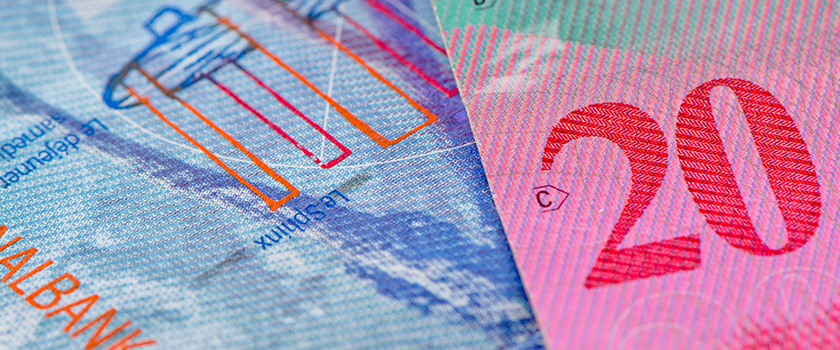There are ways of improving prospective returns from a Swiss-franc bond portfolio, while maintaining an investment-grade risk profile and a moderate maturity. The first solution is the traditional method of hedging a euro- or dollar-denominated bond portfolio against exchange-rate risk. In the current environment, such hedging delivers higher yields for Swiss-franc investors without altering the investment’s economic risk (i.e. risk relating to the type of issuer, credit rating, maturity and exposure to interest rates). Using this method, a Swiss investor can take advantage of the positive yields available on investment-grade paper denominated in euros (+0.6%) and in dollars (+2.2%). Once hedged against exchange-rate risk, yields in Swiss francs are slightly positive. However, hedging costs are very high, for example 2.1% to hedge against movements in the US dollar/Swiss franc exchange rate. It is possible to make the solution more effective by using derivatives.
Avoid hedging costs
A second, more effective solution allows investors to avoid the cost of hedging against exchange-rate risk. It involves using standard, liquid derivative instruments. Using interest-rate futures and investment-grade CDS indexes, an investor can gain exposure to investment-grade credit bonds with a 5-year maturity that is economically similar to exposure resulting from buying traditional bonds, without the cost of currency hedging. The investment takes place directly in Swiss francs and the investor only has to pay the cost of liquidity in Swiss francs, i.e. 0.75% as opposed to 2.1% to hedge against USD/CHF movements (see illustration). Overall, this is a more attractive solution, enhancing returns from a Swiss-franc investment-grade credit portfolio.
Enhancing prospective returns by using derivatives
Currently, by using credit and interest-rate derivatives, investors can obtain a superior prospective return than through the traditional method of buying US-dollar bonds and hedging against exchange-rate risk, i.e. 1.6% versus 1.0% (carry and roll-down). This is the approach that Union Bancaire Privée currently favours regarding exposure to Swiss-franc investment-grade debt. The strategy has delivered a return of close to 3% since the start of the year.

Olivier Debat
Senior Investment Specialist - Fixed Income Solutions

